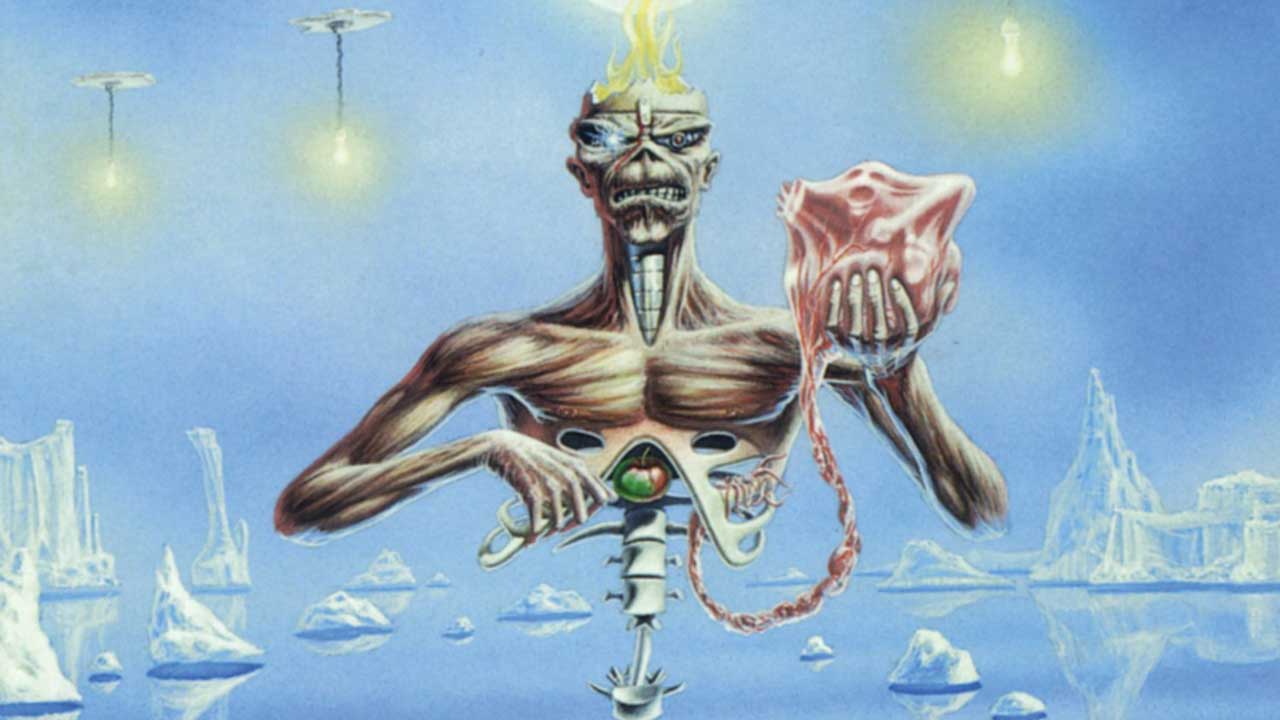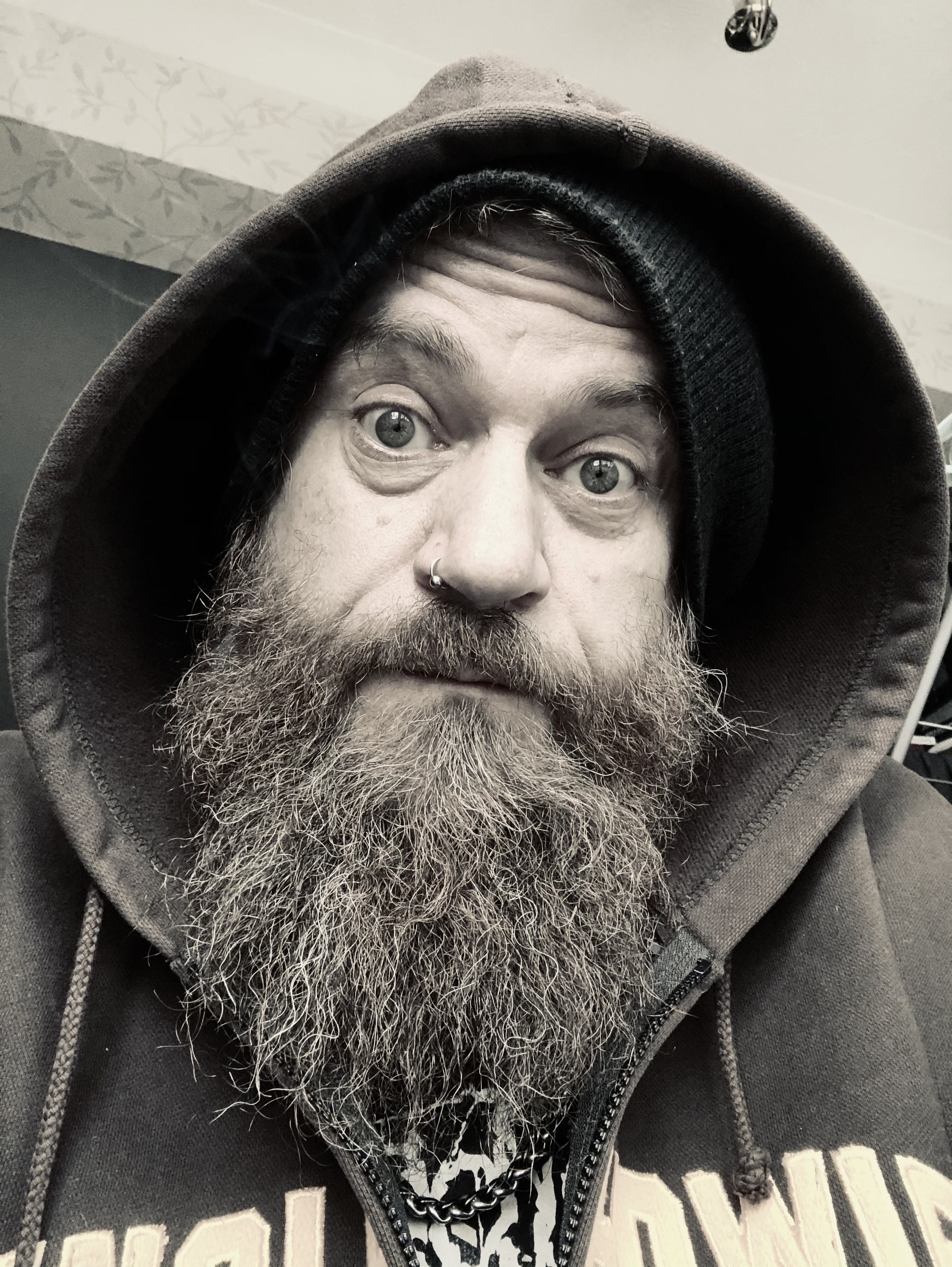On November 5, 1987, Iron Maiden finally reached the end of extensive touring in support of their sixth studio album, Somewhere In Time. Firmly established as the biggest heavy metal band on the planet by this point, their next move was clearly going to be a hugely important one. No one could have predicted what happened next, least of all famous British ‘psychic’ Doris Stokes, whose death in May 1987 proved to be the unlikely starting point for Maiden’s seventh and most impactful album yet.
“I just had a thought: ‘I wonder if she could foresee her own death?’” stated Steve Harris, in 2013’s Maiden England ’88 documentary. “Who knows? So I started off with that sort of idea. I wrote The Clairvoyant and then went to Bruce with it and basically he said, ‘Yeah, it’s a great idea!’ I started then having an idea for a song, Seventh Son Of A Seventh Son, because supposedly if you were born the seventh son of a seventh son you had the powers of a clairvoyant. So I had those two ideas and Bruce went, ‘You know what? We should do a concept album about this…’”
It might seem silly to suggest that Maiden had anything to prove by 1988, but there was a sense that 1986’s Somewhere In Time had been difficult for the band to make. Famously, Bruce Dickinson had come to Steve Harris proposing some more acoustic-based, prog-tinged material for the record but had been briskly turned down. The album that then emerged was full of great material, not least three songs written in their entirety by guitarist Adrian Smith, but it didn’t seem to have the same phenomenal impact that Powerslave had had two years earlier.
As a result, as Maiden plunged into a ridiculously intense period of writing and recording, there was a huge amount of pressure on them to deliver something special. Partly inspired by Seventh Son, a fantasy novel by author Orson Scott Card, Steve’s nascent concept soon blossomed into something more substantial, aided by Bruce’s return as a songwriter.
“Bruce had something to prove,” says Mick Wall, Hammer alumnus and author of Run To The Hills, the official Iron Maiden biography. “He hadn’t had a song on a Maiden album for four years. Steve upped his game, too, and Adrian was in a wonderful purple patch, where he was knocking out meaningful, cool songs. It was a confluence of all of that and it turned into a hugely significant moment for them.”
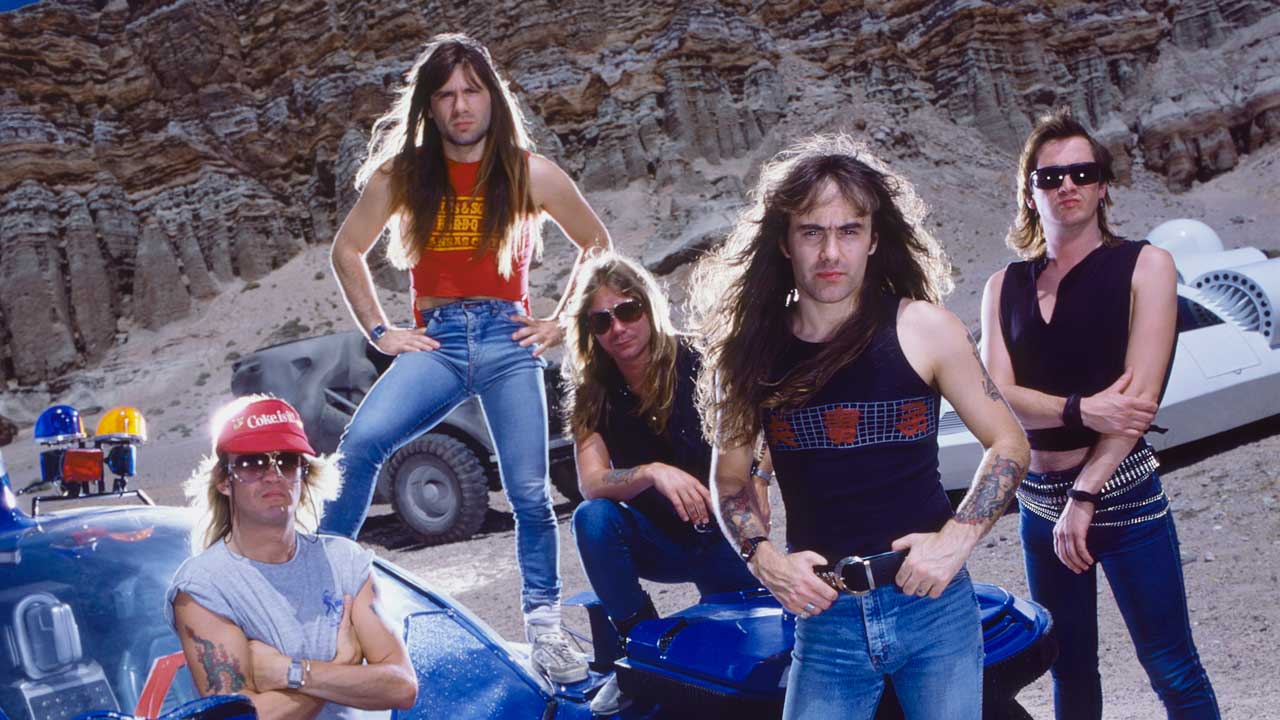
Recorded at Musicland Studios in Munich, Germany, in February and March 1988, with long-time producer Martin Birch once again at the controls, Seventh Son Of A Seventh Son took shape at an insane pace, largely due to the fact that the band’s next world tour was already booked and due to kick off at the end of that April.
Given how the album turned out, and you may struggle to find a diehard metalhead who doesn’t love Seventh Son…, it’s plain that Maiden were on the strongest collective form of their careers to date, working harmoniously and revelling in each other’s creativity – even if the much-discussed concept underpinning the album was not quite as coherent or precise as the band may originally have intended.
“Like most things, it got about halfway down the track and then sort of veered off at a tangent,” Bruce noted in Maiden England ’88. “Because whenever we’ve done concept albums in Maiden, we’ve never followed the plot slavishly. We’ve got to about halfway through and then done a song about Battersea Dogs Home in the middle of it… or something. You think, ‘Why is that on there?’ Just ’cos it is!”
An explosive taster for the album to come, first single Can I Play With Madness was released in March ’88 and rocketed straight into the UK singles charts at No.3. Undeniably given a boost by the song’s daft but great video, which featured a cameo from legendary comic actor Graham Chapman, a member of iconic British comedy troupe Monty Python’s Flying Circus, it was by far the catchiest and most direct song that Maiden had released at that point. Despite having had numerous chart successes in the past, the band had never made any effort to become pop stars, but pop stars they were clearly becoming. This time round, mainstream radio and TV simply couldn’t ignore them.
“Immediately you got a sense that this could be the album that you didn’t have to be a solid Iron Maiden fan to appreciate,” says Mick Wall. “Can I Play With Madness was a huge hit for them. It wasn’t something they’d been bothered about before. It had always been about the album and rightly so, but in the end they had several hits from Seventh Son… They did a lot more TV, radio and all that stuff. If you’re at No.3, then of course they want you on [kids’ tv show] Going Live! with Phillip Schofield!”
As if to emphasise their status as commercial heavyweights, Iron Maiden launched Seventh Son… by hosting a boozy promotional event at the epic Castle Schnellenberg in Attendorn, Germany. Journalists and TV folk from across the globe flew in to interview the band about their new magnum opus in surroundings befitting of its musical opulence. A lot of time and money was being thrown at Seventh Son Of A Seventh Son, and understandably so: this was an album that seemed to be causing a stir even beyond the usual rock’n’roll world.
“We had all the media from Europe and America come in for a long weekend of interviews, drinks, playbacks, drinks, photos, drinks…” Maiden manager Rod Smallwood recalled in Maiden England ’88. “We’ve never been a corporate band, but at that time [sports clothing company] Puma came along and said, ‘Would you like some free kit?’ So, we said, ‘Yes, of course we do!’ Puma was a great deal but the band insisted on wearing the bloody tracksuits all the time, so the photos from that time look appalling! You know, they’re almost in shellsuits… I mean, really not very metal!”
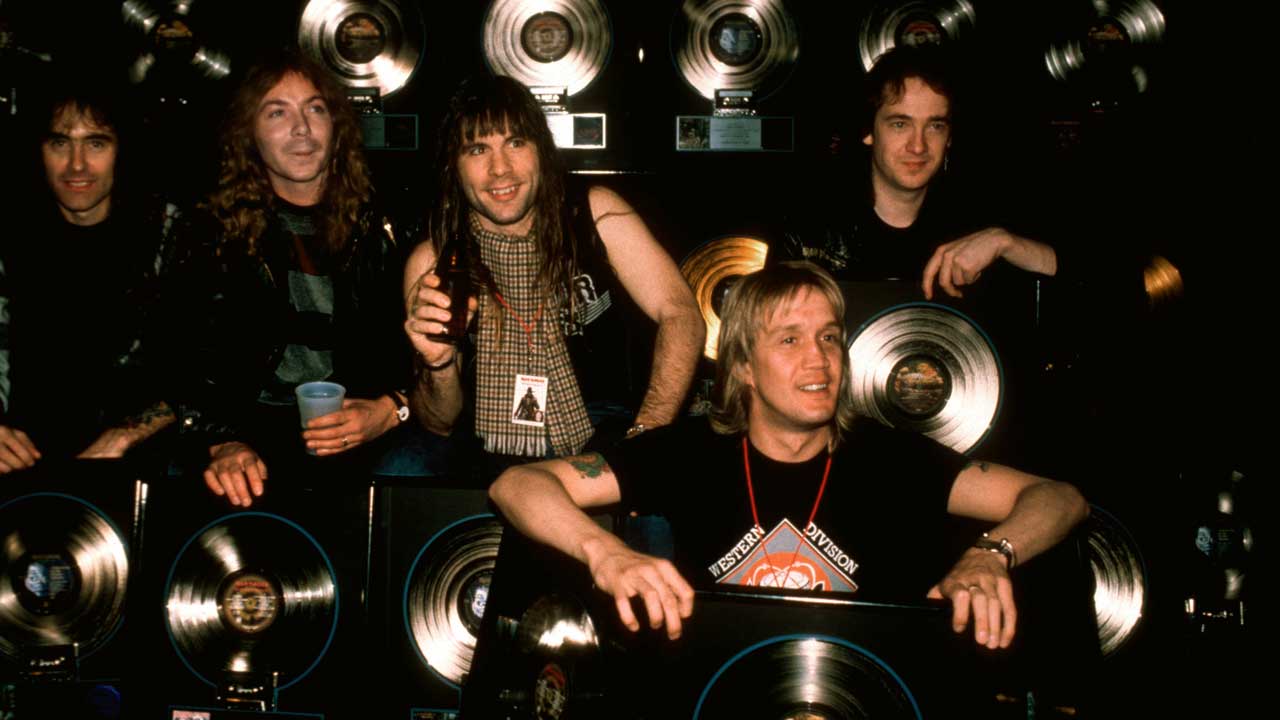
Despite such sartorial calamities, Seventh Son Of A Seventh Son was released on April 11, 1988. As hinted at by the preceding single’s success, it roared to the top of the UK album charts amid near-universal acclaim and a particularly ecstatic reaction from Maiden’s fanbase.
Everything about Seventh Son… seemed right. In one sense it was a brave, adventurous and musically challenging affair: from Bruce’s spinetingling atmospheric intro, to Moonchild and Infinite Dreams’ sophisticated dynamics and blistering solos, to the extravagant prog metal voyage of the nine-minute title track and the triumphant, skewed catchiness of The Clairvoyant, Seventh Son… was the sound of Maiden stretching out. But it was also an album of punchy, perfectly constructed metal anthems: Can I Play With Madness, The Evil That Men Do, Only The Good Die Young... unforgettable gems, one and all.
“If Somewhere In Time was a Claymation figure, it wouldn’t quite be painted yet. It would have the eyes, the arms, and the bits’n’bobs and you’d say, ‘Yeah… I can see where you’re going there!’ you know?” Bruce noted in 2013. “But what you get with Seventh Son… is a much more recognisable definitive statement. Right, boom, here’s the whole thing, all in one piece.”
“Personally, I think the magic source of that album was that Bruce came back as a writer,” says Mick. “Seventh Son… is the last album they ever did with what my generation would regard as the classic line-up. With no respect to Janick [Gers, current Maiden guitarist], who’s a great player in his own right, but Adrian and Dave together as a team were magical. On so many levels, Seventh Son… is one of those big moments in the Maiden story.”
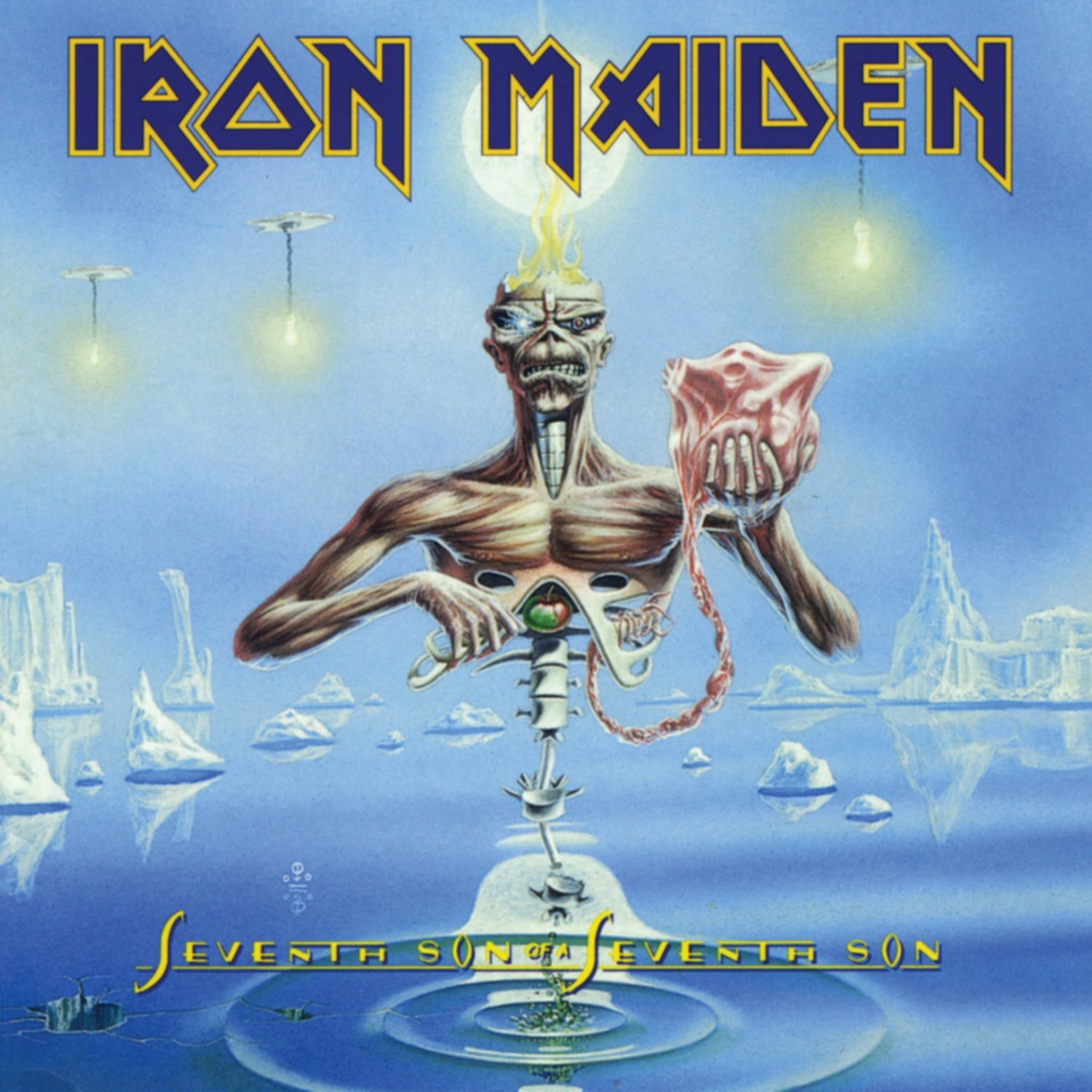
If there was any dissent upon Seventh Son…’s release, it was focused on the fact that Maiden’s seventh album saw them fully embracing the use of keyboards for the first time. As ridiculous as it now seems, it was a genuinely controversial move for a metal band in 1988.
“I guess some people were unhappy, but in the right place, keyboards can be really cool,” says Markus Grosskopf, bassist with Helloween, who toured extensively with Maiden during the late 80s. “They created a special mood on that record. Listen to the harmonies and the melodies. It takes you to another world and it’s very much Maiden’s style and theirs alone. The whole album is full of great moments, great guitar playing, great singing and amazing arrangements. It touches you and you have to go with it. The atmosphere was so strong. It’s only eight tracks, but they’re all great tracks.”
For Helloween in particular, Iron Maiden’s ongoing dominance of the metal scene was a solid good omen. By 1988, the Germans were being described as “the next Maiden” or “the German Iron Maiden”, partly because hugely successful records like that same year’s Keeper Of The Seven Keys Part II clearly owed a significant debt to Maiden’s strident, melodic sound.
“We looked up to them, for sure,” Markus states. “The first Iron Maiden album was the record that introduced me to heavy metal and hard rock, because I was a punk before that, ha ha! It was the way they used harmonies over this fast, aggressive music – that really touched me. In Helloween, we have always wanted to do our own thing and we have our own sound, our own style, but of course Maiden are a big influence. When we started touring with them, it was a special thing. Playing with them made it possible for us to dream about getting out there and doing it on our own.”
With their new album flying off the shelves in the UK, across Europe and beyond, Iron Maiden hit the road for the Seventh Tour Of A Seventh Tour, kicking off in Germany on April 28 and powering their way through the next eight months, armed with their most spectacular stage show to date. With physical manifestations of Derek Riggs’ extraordinary Seventh Son… cover art, replete with giant icebergs and a huge, floating Eddie, it was an eye-frazzling spectacle, even by Maiden’s lofty standards.
Blessed with the opportunity to support Maiden during a run of US dates and the climactic UK run of the tour, Canadian hard rockers Killer Dwarfs could hardly believe their luck.
“It was a big deal for us on a big-deal album for Maiden,” recalls frontman Russ Dwarf. “Their show was fucking epic! We were huge fans and we were definitely shitting our pants. We knew our place, we weren’t cocky assholes, but they treated us like equals. Guns N’ Roses had supported them on the tour, too, so we knew it was a big deal. Maiden are so loved and everyone was there for the same reason. They’re such a passionate band. It was like theatre! We were just kids and our minds were blown. Playing at Hammersmith and Wembley when Maiden were at their absolute peak? It doesn’t get better than that.”
“Touring with Maiden was always good and that tour was a really great one,” adds Markus Grosskopf. “We had everything we needed, including plenty of space on stage, even though they had lots of Eddies and big mountains and ice and all of that stuff. The stages must’ve been really big, ha ha ha!”
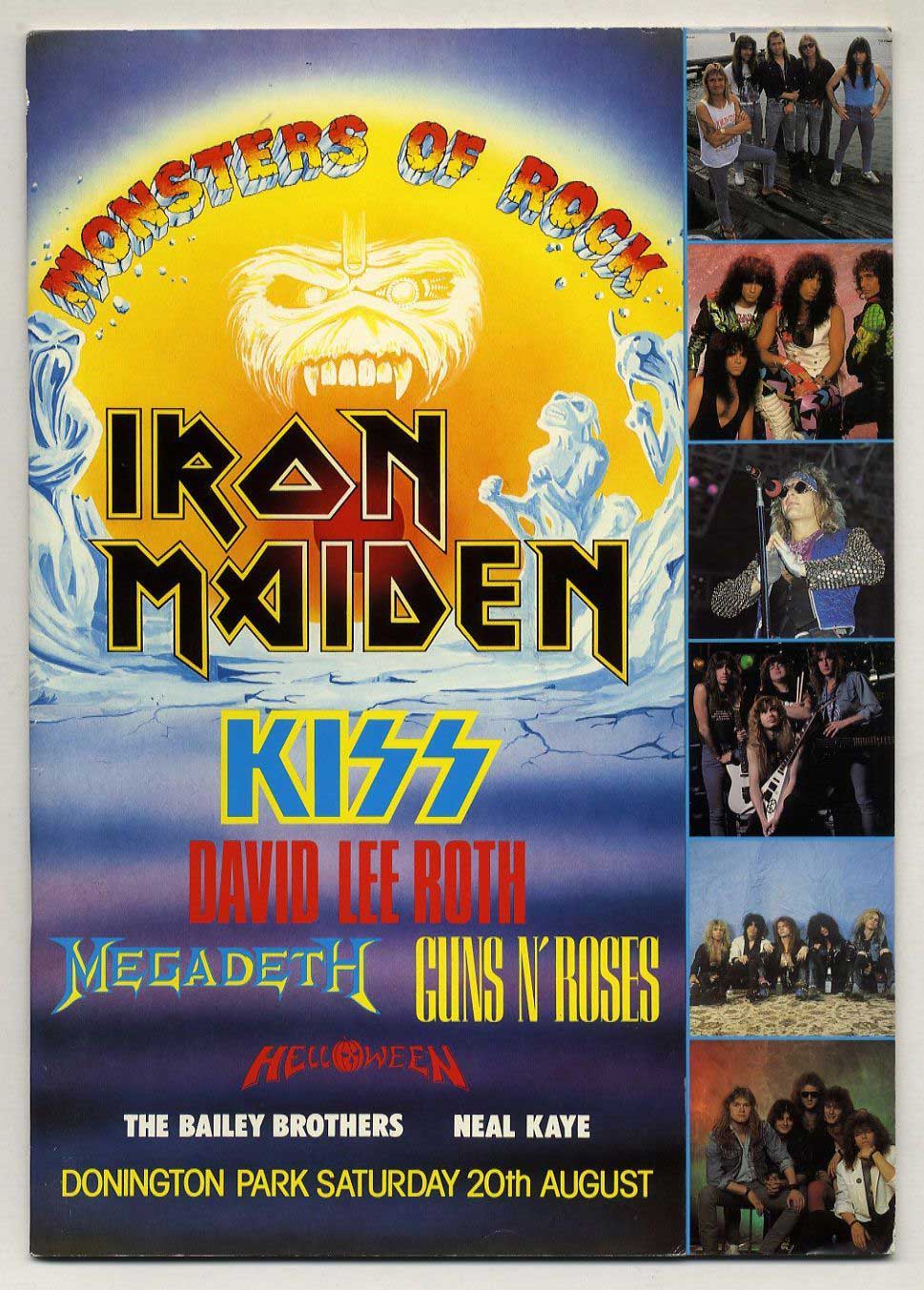
The story of Seventh Son Of A Seventh Son is primarily one of creative and commercial success, as an already potent force gained momentum and dragged the world along with them. On August 20 1988, Iron Maiden headlined the prestigious Monsters Of Rock one-day festival at Castle Donington for the first time. If proof were needed that Maiden had hit a new level of popularity, the staggering size of the crowd that came to see the band – alongside Helloween, Megadeth, David Lee Roth, Guns N’ Roses and Kiss – was the clincher. An estimated 107,000 people marched through the mud that day, making it the biggest Monsters Of Rock yet.
“We knew we had an outstanding success,” states Tim Parsons, the legendary promoter who booked the 1988 bill. “People were walking across fields, having abandoned their cars. The aerial photographs made the crowds look like crop circles! Eventually we ran out of tickets and were selling raffle tickets, so if anyone still has one of those it could fetch quite a bit on eBay. It was Maiden’s big day and they were a delight to work with.”
Hammer scribe (and Maiden devotee) Dave Ling was also present on that unforgettable day and remembers the occasion as a unique milestone in Maiden history.
“As a fan who’d followed them since the club days, it really felt as though they had stepped into the big time,” he says. “The management had wisely kept the band away from Donington until they were able to do the event full justice. To go there and put on a stupendous show, in front of an audience that will never be surpassed in terms of size, felt like a complete vindication of that strategy. The excitement in the crowd was unbelievable. In those days there was, of course, only one stage and all 107,000 people had their attention focused onto that area of space. I can still remember the chills when the intro tape began. With hindsight I’m not sure I saw them any better, certainly not before Bruce left and re-joined. If the band felt any nerves they simply didn’t show.”
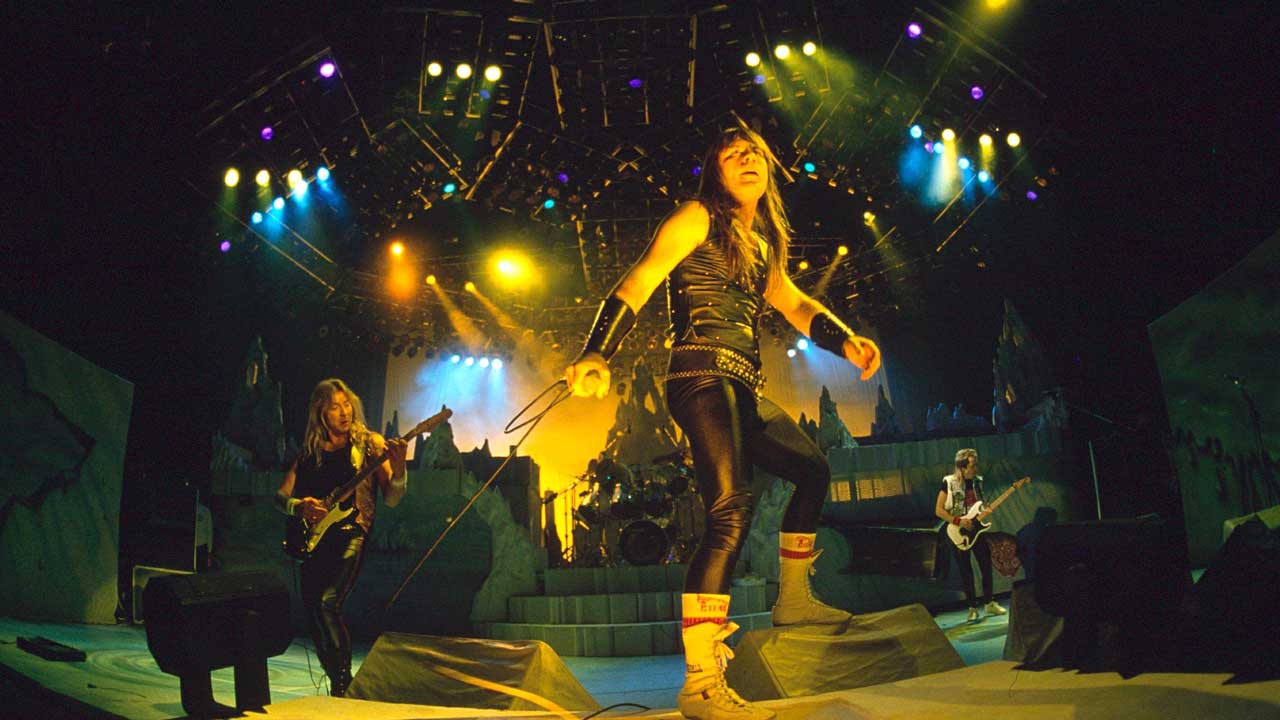
Sadly, what should have been Iron Maiden’s ultimate moment of glory would be irrevocably marred by tragedy, as two young Scottish metal fans – Alan Dick and Landon Siggers – lost their lives as the sodden ground gave way during Guns N’ Roses set. Unaware of the deaths, Maiden powered through their headline set with customary flare and delivered the milestone performance that their ongoing rise demanded. But as Tim Parsons admits, there was no denying that the shine on Maiden’s triumph had been brutally wiped away.
“We took our responsibilities seriously but we could never have foreseen the set of circumstances that led to those fatalities that day,” he notes. “It was just hideous. It was awful for Maiden, to hear what had happened after their show, amid all that euphoria. But with very few exceptions, I wouldn’t have wanted anyone else to be the headliner on that day. It was comforting, because we didn’t have to worry about them. They were utterly professional.”
It would be inaccurate to say that the Donington tragedy precipitated Maiden’s mild commercial decline in the 90s, but it’s hard to deny that nothing was ever quite the same again. Within a year, Adrian Smith had quit. The classic line-up that had achieved so much during that first, fiery decade began to fall apart, Seventh Son… its immaculate, seminal epitaph.
“It was just a huge moment for Maiden,” concludes Mick Wall. “It was Maiden’s Dark Side Of The Moon or their Led Zep IV! Ninety-nine percent of bands don’t get to make one masterpiece. If you make one, you’re in the club, and Seventh Son… is Maiden’s masterpiece.”
“I still think it is a really strong album,” Steve Harris concluded during Maiden England ’88. “I think it’s stood the test of time, and I think if we do any of those songs off that album live, I think they will still stand up against anything that we’ve done, before or afterwards.”
Of course, we all know how the story played out and, 30 years on, Maiden are as big and as loved as they ever were, but have they ever made a better record than Seventh Son Of A Seventh Son? Has anyone?
